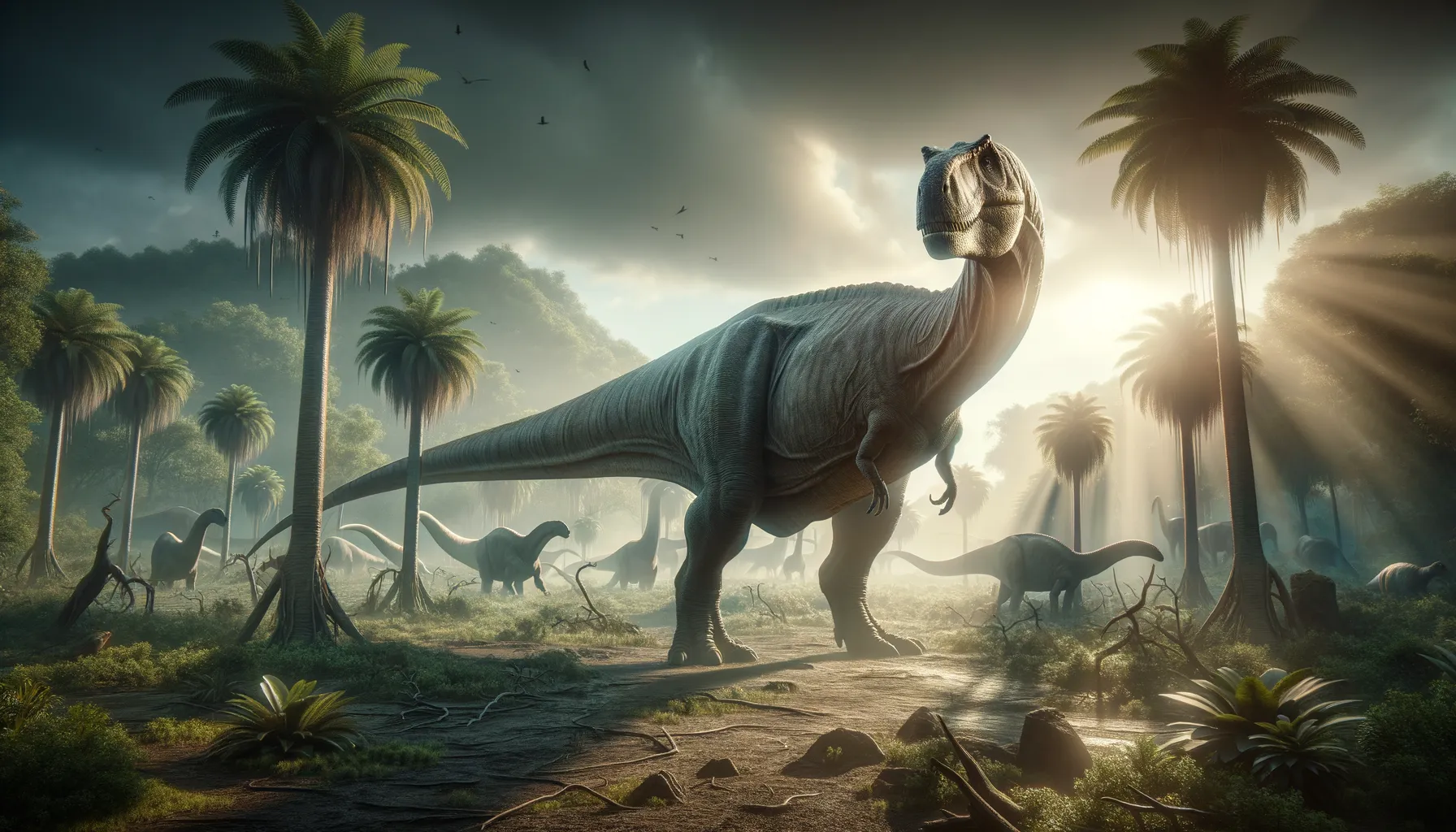
Gongxianosaurus
Ancient giant with a gentle heart.
Period
Jurassic
Length
About 40 feet from head to tail.
Height
Around 10 feet at the shoulders.
Weight
Approximately 4 to 5 tons.
Gongxianosaurus is a lesser-known dinosaur that roamed the earth during the early Jurassic period. This massive herbivore belonged to the sauropod family, known for their long necks and tails. Discovered in China, Gongxianosaurus provides crucial insights into the evolution of these giant creatures. Its fossils have helped scientists understand the transitional features between earlier prosauropods and later, more advanced sauropods.
Diet
Gongxianosaurus was herbivorous, primarily feeding on plant material. Its long neck allowed it to reach high vegetation, giving it access to a variety of plant species in its environment.
Hunting
As a plant-eater, Gongxianosaurus did not hunt other animals. Instead, it relied on vegetation, which would have been abundant in its Jurassic habitat.
Environmental challenges
During its time, Gongxianosaurus faced the challenge of finding sufficient food to sustain its large size. Fluctuations in climate and vegetation could have impacted its food supply. It also needed to avoid predators that may have targeted young or weaker individuals in its herd.
Speed
Gongxianosaurus likely moved at a slow pace.
Lifespan
It could have lived for several decades.
First discovery
First discovered in Sichuan, China in the late 1990s.
Fun Facts
- Gongxianosaurus is one of the earliest known sauropods, living during the Early Jurassic period over 180 million years ago.
- Its fossils were discovered in China, allowing scientists to learn more about early sauropod evolution in Asia.
- Unlike some of the more famous sauropods like Brachiosaurus or Apatosaurus, Gongxianosaurus was relatively small, growing up to about 13 meters long.
- Gongxianosaurus likely walked on all four legs and had a long neck, useful for reaching vegetation that other herbivores couldn't.
- The name 'Gongxianosaurus' means 'Gong County lizard', named after the region where its fossils were found.
- Gongxianosaurus had spoon-shaped teeth, which were likely used for stripping leaves from branches similar to many larger sauropods.
- This dinosaur provides important clues about how sauropods evolved to become the giant herbivores of later periods.
Growth and Development
Gongxianosaurus likely had a long growth period, taking many years to reach full size. Juveniles would have grown rapidly to avoid predation, while adult size would have afforded some protection. Their bones show growth rings, similar to those of trees, indicating seasonal growth patterns.
Habitat
Gongxianosaurus lived in what is now China, in a lush, forested environment. It thrived in areas with abundant plant life, including conifers and ferns. The region had rivers and lakes, providing water and supporting a rich ecosystem.
Interaction with other species
Gongxianosaurus likely lived in herds, offering protection and social interaction. It coexisted with other herbivores and smaller dinosaurs, sharing the vegetation. Predators in its environment would have posed a threat to its young, requiring vigilance and group defense strategies.
Natural lifespan
Typically, these dinosaurs may have lived to around 70-80 years.
Reproduction
Like other sauropods, Gongxianosaurus likely laid eggs. Nesting sites would have been carefully selected to provide safety and warmth for the developing embryos. Parental care is uncertain, as fossils do not provide conclusive evidence for sauropod parenting.
Social behaviour
Gongxianosaurus was likely a social animal, moving in groups for protection against predators. These groups may have consisted of family units, providing care and learning opportunities for the young.
Fossil locations
Fossils of Gongxianosaurus have been found primarily in Sichuan, China. The region's rich fossil beds have offered valuable specimens that have aided in understanding this dinosaur's morphology and lifestyle.
